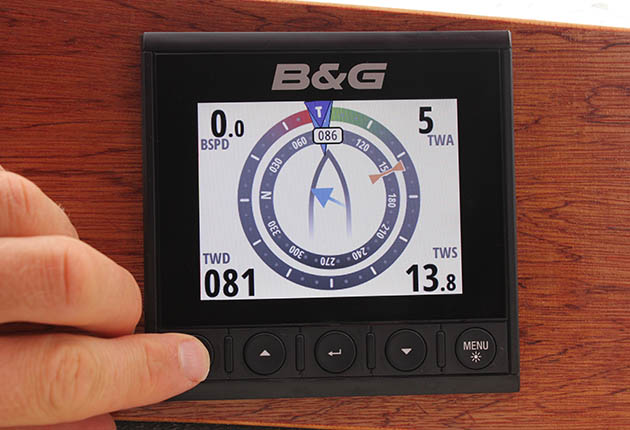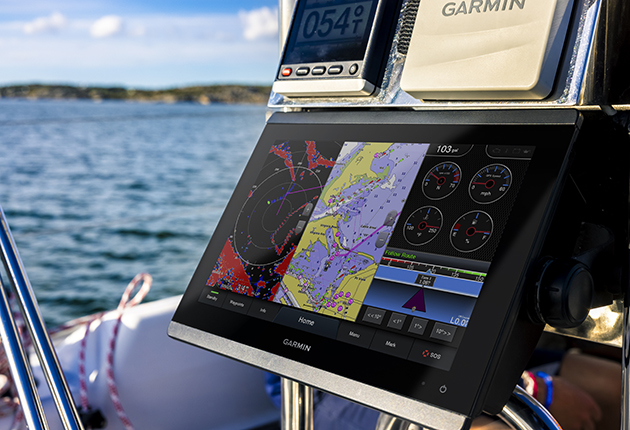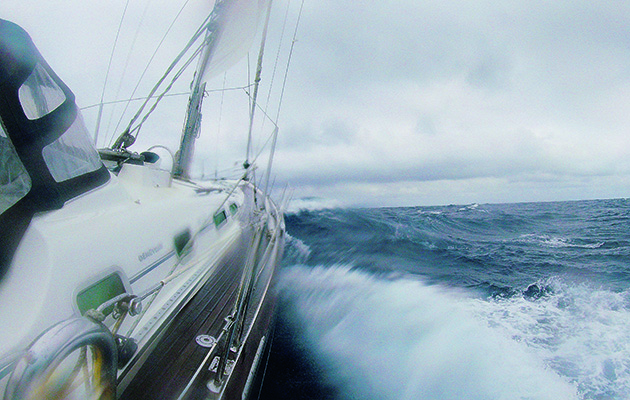We test the integrated navigation system - the pure sailing B&G Vulcan 7 and networked instruments to see if it represents value for money
Tested: B&G Vulcan 7 Network
The chartplotter on our boat was ancient and our instruments didn’t ‘talk’ to each other.
It was time not just for a new chartplotter, but for a complete overhaul of our instruments with a modern NMEA 2000 network.
What is the B&G Vulcan 7 Network
We opted for the B&G system because it is made purely for sailing.
The heart of our system is B&G’s entry-level Vulcan 7 touch-screen multifunction display and chartplotter.
We chose Navionics cartography as we are both used to using this on our mobile phones and we liked the functionality it offers.

Choose the cartography you prefer, and update it on board using Wi-Fi in a marina or through your phone
We mounted it on deck where the sunlight-visible and waterproof screen comes into its own.
Next to this we mounted a Triton 2 instrument display to give us wind, speed, depth and a host of other information on display while using the Vulcan 7 as a chartplotter.
Data was provided by the Airmar DST 800 through hull transducer (depth, speed and temp) and the WS320 wireless wind sensor.
The test
Installing the system was done with the help of Sean Hunter from Greenham Regis Marine Electronics in Chichester, which significantly reduced the time and effort involved in laying out the system, routing wires and getting it correctly powered up.
The Vulcan 7 and the paired Triton 2 display are powerful bits of kit with an array of functions, so learning exactly what they can do takes time.
The basic data was incredibly easy to locate and display.

Navionics cartography was clear, detailed and easy to view and use, even on a 7in display
On the Triton 2, scrolling through the pages gives you a choice of data, including depth, depth and speed, autopilotcontrol (if fitted), route navigation, wind and depth log and B&G’s SailSteer display.
In a circle around a virtual yacht, SailSteer shows a full compass card, as well as angles off the vessel’s head, with indicators for true and apparent wind direction, tidal set, waypoint bearing and laylines.
We most often used SailSteer or basic display underway, and depth plot when entering shallow water and at anchor.
We always used the depth and swing circle alarms at anchor.
Continues below…
How to choose the right digital charts for your sailing
There are big changes underway in the world of digital cartography, finds Sam Fortescue. We review the latest digital charts
How to modernise your boat on a budget
Updating your instruments, and the data you can see on them, needn't cost the earth. Sam Fortescue investigates how to…
AIS vs radar: Do you really need both?
AIS and chartplotters have come a long way in the last decade, but are they enough to replace radar? Jonty…
Keeping a lookout using electronic navigation aids
Your boat's electronic navigation aids can help keep you safe, but it's easy to be overwhelmed by the amount of…
All the data available on the network could be displayed, and it was almost infinitely configurable as to what data to display.
The Vulcan 7 has a 7in display and an integral GPS receiver, which we used for our trip, making it suitable as a stand-alone unit, though it doesn’t have compass data without an external sensor.
It is WiFi enabled, so can connect to iPad or iPhone, giving you a complete mirror and control of everything that is on the network.
Verdict on the B&G Vulcan 7 Network
Conveniently, the Vulcan 7 just fitted into the existing instrument panel above our companionway.
The high- quality colour screens on both units were visible at all angles and in all lights, even with polarised glasses.
They used very little power (Vulcan 7, 1A; Triton 2, 0.1A).
I was skeptical about not having any buttons on the Vulcan 7, but the touch screen worked well in both the wet and dry, though our test was only in summer.
An intuitive menu structure means I still haven’t opened the user manual.
B&G isn’t the cheapest brand, but I felt given the quality and functionality offered, the £790 price tag represents good value for money.
On the network: sensors & displays
Airmar DST 800

The B&G-supplied Airmar DST 800 through-hull transducer gives depth, speed and temperature in one unit.
The skin fitting is a standard size for easy fit.
Price: £266.66
WS320 wireless

The new WS320 wireless wind sensor is solar powered and is pared to a NMEA2000 Bluetooth base station.
It clips easily into a masthead fitting.
Price: £670
Triton 2

A 4.1in optically bonded colour display with ‘transflective’ LCD viewing.
It has low power consumption and is able to display all data available on the network.
Price: £490
*Yachting Monthly is not paid by manufacturers for our recommendations. If you click through and buy an item, we may receive a small amount of money from the retailer, at no cost to you.*
Enjoyed reading Tested: B&G Vulcan 7 Network?
A subscription to Yachting Monthly magazine costs around 40% less than the cover price.
Print and digital editions are available through Magazines Direct – where you can also find the latest deals.
YM is packed with information to help you get the most from your time on the water.
- Take your seamanship to the next level with tips, advice and skills from our experts
- Impartial in-depth reviews of the latest yachts and equipment
- Cruising guides to help you reach those dream destinations
Follow us on Facebook, Twitter and Instagram.








